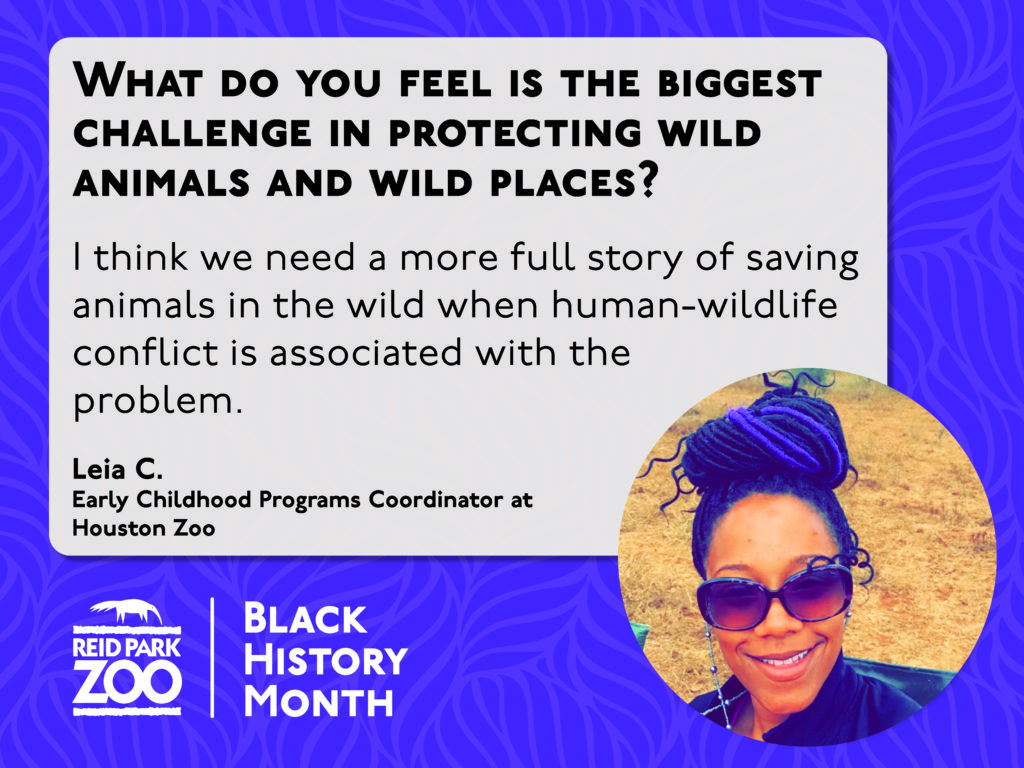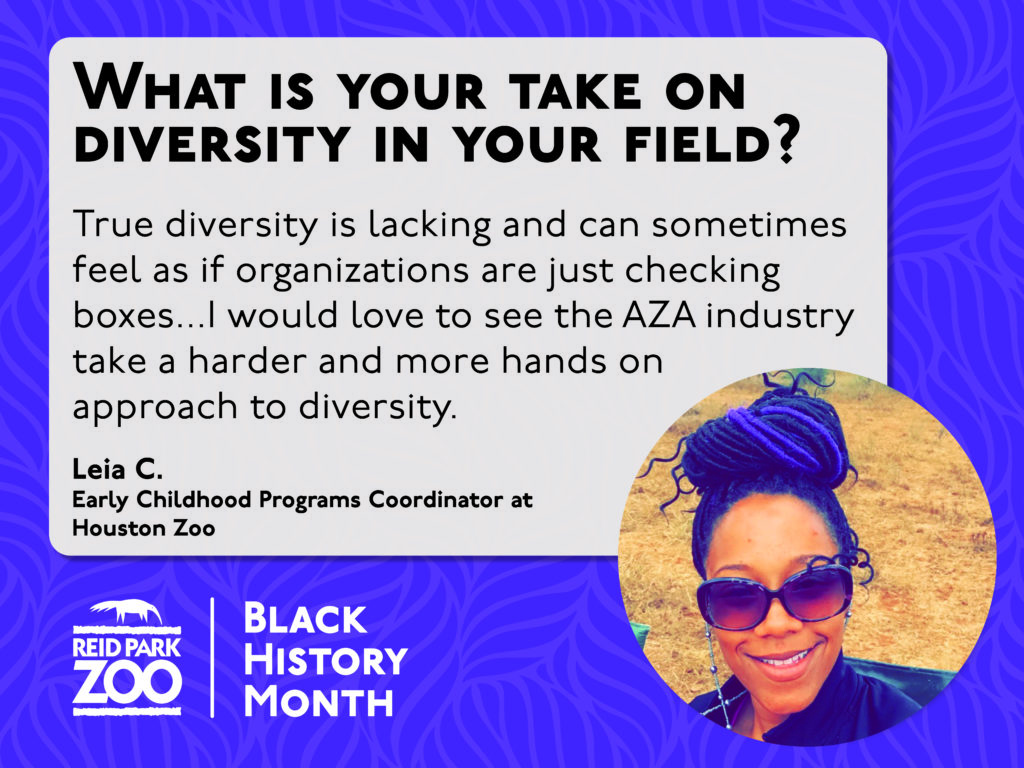Black in Nature: Featuring Leia Cook

This post is part of “Black in Nature: Tackling Diversity in Conservation,” a Black History Month series giving Black people who work in animal care and conservation a platform to share their experiences and spark the conversation necessary for change. Learn more here.
Leia Cook is the Early Childhood Programs Coordinator at Houston Zoo who feels that “being Black in conservation means going back to our roots, working alongside the plants and animals of our environment.” She is proud to have earned a Master of Arts in Teaching in biology through Project Dragonfly, a place-based masters program. She says that her experience has been filled with ups and downs.
“I cannot say I’ve ever felt my skin color was a detriment to me receiving a position,” shares Leia. “However, I can say my blackness has caused others to use prejudices towards me. The hardest part for me to work through was that this sometimes came from fellow staff members rather than random guests.”
Leia recognizes a lack of diversity in the zoo career field and says it can sometimes feel as if organizations are just checking boxes.
“I am not sure that there is even a collective agreement that diversity in my field is inadequate,” says Leia. “I would love to see the AZA [Association of Zoos and Aquariums] industry take a harder and more hands on approach to diversity as well as individual institutions.”
One suggestion Leia has is for institutions to use “real life situations rather than prefabricated training protocols.” She recommends that organizations could ask their employees who identify as minorities if they would like to share their experiences.
Increased diversity is critically important for representation. Leia feels that she is in a role where others can look up to her and know that they can belong in her field.
“[Being Black in conservation is] about sharing stories and encouragement to other young ones because you realize how much representation matters and how you want them to have someone to look up to even though you may not have had that. But it also means constantly sharing with our community (those that look like us and those that do not) that Black people DO belong in this field and are experts and it shouldn’t be seen as a far fetched idea.”
Increased representation is only one part of the formula, and Leia feels that increased communication of opportunities is also needed.
“I think that more organizations need to change how they share their stories and recruit. For example, if you’ve always gone to the same PWI [Primarily White Institution] job board for program/staffing opportunities, maybe it’s time to start looking in other places like HBCUs [Historically Black Colleges and Universities].”
One opportunity is the Project Dragonfly program through which Leia earned her master’s degree. Her program culminated in a trip to Kenya which Leia describes as life changing. The trip offered her a sense of connection and belonging that was a novel experience.
“As the only Black person on my trip to Africa, one of the most memorable moments for me was when we visited a local mall. I noticed at least three other girls walk past me with purple box braids (I also had purple faux locs at the time). It was such a sense of belonging to finally see other people rock the same hair style rather than asking me if they can touch it or how did I style it.”
Through her experiences and education Leia has learned about the threats facing wildlife and wild places. She emphasizes the importance of considering the human side to human-wildlife conflicts that affect conservation.
“One of the biggest challenges I feel is the Western World understanding the why behind some communities choosing to remove animals from their environment. For example, we often have our heart strings tugged at when we hear the plight of elephants and want to blame anyone for harming such a magnificent animal. But we do not always take into account that a community may have been trying to protect their family members, crops, etc. from destructive animals around their home. I think we need a more full story of saving animals in the wild when human-wildlife conflict is associated with the problem.”

